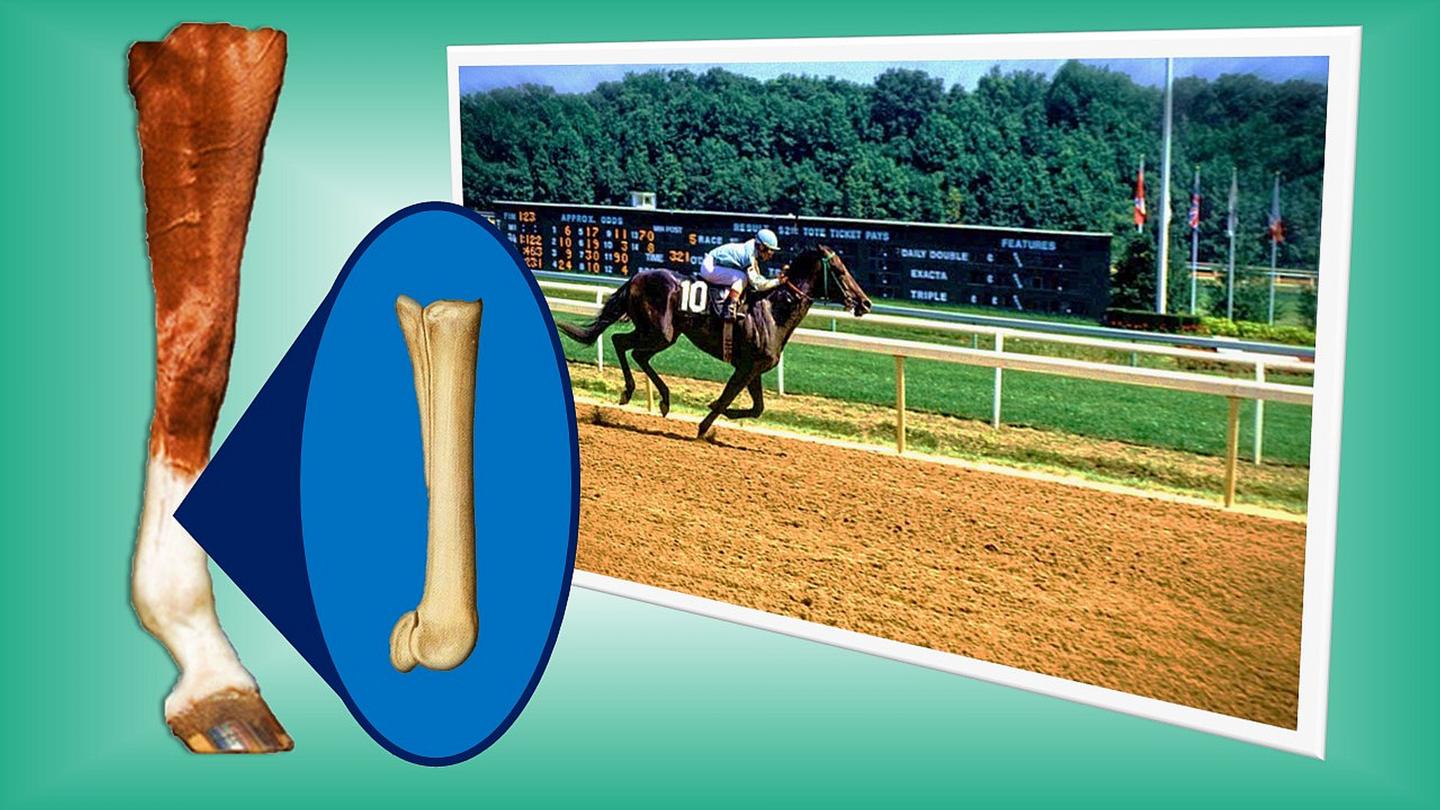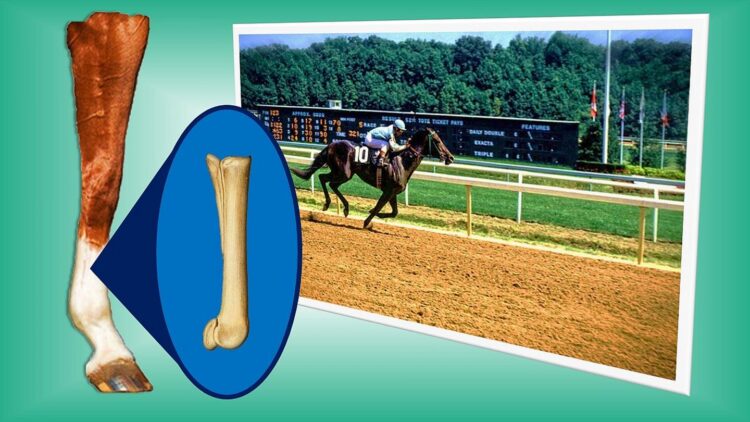
Credit: Graphic by M.E. Newman, Johns Hopkins Medicine, using public domain images for the horse leg and bone, and a racehorse photo courtesy of M.J. Boswell
In an anatomical comparison of the third metacarpal, or cannon bone, among Thoroughbred racehorses, American Quarter Horses and feral Assateague Island ponies, Johns Hopkins Medicine researchers have found that fostering adaptations in these bones through training might help horses better endure the extreme conditions of racing and prevent serious, often life-ending injuries on the track.
Racehorses operate at a biomechanical extreme. The 1,000-pound or so animals can move up to 40 miles per hour on long, thin limbs genetically evolved to move them across long distances.
When pushed to race at high speeds, a horse’s legs can fracture beneath them in an event called a breakdown. Seventy percent of these injuries occur in the third metacarpal bone between the horse’s knee and pastern (the area just above the top of the hoof). Because of the fragile nature of their limbs, breaks such as these can cause irreparable tissue damage, resulting most often in the animal having to be euthanized.
“With so many Thoroughbreds breaking their legs this way, we thought there must be a way to predict and prevent it,” says Deanna Goldstein, a doctoral candidate in the Center for Functional Anatomy and Evolution at the Johns Hopkins University School of Medicine and lead author on the paper, posted online August 17, 2020, in the journal The Anatomical Record.
To understand why racehorses break down, Goldstein compared the sizes, densities and abilities to bend without breaking of the three types of canon bones studied to examine the effect on them from each breed’s lifestyle and training.
Thoroughbreds, for example, are trained to run long distances around turns for races like the Kentucky Derby. American Quarter Horses are trained to sprint short distances in mostly straight lines, and are named for their superior ability to run a quarter mile faster than any other breed. Assateague Island ponies are shorter, stockier animals that live wild, and therefore, offered an untrained population against which to compare Quarter Horses and Thoroughbreds.
“Comparisons between these breeds present an interesting opportunity to look at the relationship between the mechanical stresses on the bone and the bone’s structural response in an animal that is pushed to its physiological limits,” says Goldstein.
In the study, bones were collected only from horses who died or were euthanized for reasons unrelated to a broken or injured third metacarpal bone.
Although the size of the third metacarpal bone varied among the three horse breeds, Goldstein was surprised to find that the bone’s strength and structure relative to body size were remarkably similar across the three types of horses.
“If Thoroughbreds are racing and training around turns, you would expect certain areas of their bones to be a lot stronger to reflect that,” says Goldstein. “However, since the Thoroughbred third metacarpals are not more dense or stronger than the other two breeds, it indicates that the Thoroughbreds’ bones are just not prepared for those forces.”
What should be seen, says Goldstein, is evidence of bone remodeling — the process by which new bone growth helps the skeleton respond to mechanical stress. Similar to how weightlifting strengthens human bones, exposure to the stresses of racing around turns should create anatomical differences between Thoroughbred horses and other breeds. These adaptations would prepare their bones to resist fracturing.
Goldstein suggests that adding training around tighter turns at higher speeds could give Thoroughbred horses’ bones time to adapt to the extreme forces and be more resistant to breaks on the track.
Thoroughbred horseracing has been mired in controversy as numerous accounts, such as one in a June 22, 2019, article in the New York Times, reveal a growing number of fatalities in the sport, with many attributable to leg fractures. While some of these cases have been linked to animals being given performance-enhancing drugs, Goldstein and her colleagues believe that scientifically backed interventions in how racehorses are managed and trained could better protect them from stress-related breakdowns on the track.
###
Media Contact
Rachel Butch
[email protected]



